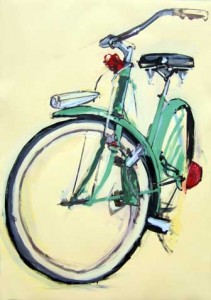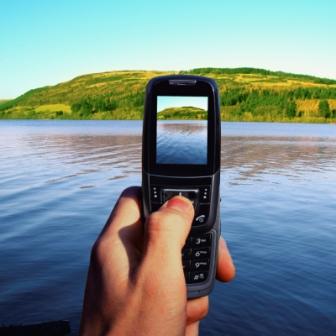WHAT TO DO IF YOU ARE IN A BIKE/CAR CRASH
By Steven M. Magas, Ohio’s Bike Lawyer
Is Cycling “Safe?”
Statistically, we know that riding a bike is a VERY safe thing. While there are 30-40,000 motorists who die on our roadways each year, the number of cyclist fatalities has dropped considerably from a high of 1000 or so in the mid-1970s to around 700 in 2008. In Ohio, 10-20 riders are typically killed on the roads each year despite MILLIONS of active cyclists riding MILLIONS of miles. While motorcycle and pedestrian deaths are UP, cycling deaths are DOWN. You can read about bicycle crash statistics here at the IIHS website.
One reason for this decrease in cyclist deaths nationwide, I’m sure, is that the demographics of the “typical” cyclist involved in a fatal crash have totally flip-flopped since 1975. Back in the 1970’s, MOST cycling fatalities involved kids – people under the age of 16 – which meant that riders were somewhat unpredictable. There were a lot of “Dart Out” cases where children on bikes would suddenly appear on the roadway after darting out from a driveway.
Today, virtually all cycling deaths involved adults. 86% of all cycling fatalites involve people OVER 16 today. Today’s adult riders are more likely to treat operating a bicycle on the roadway the same as driving a car. They stay in their lane, know the rules of the road and don’t act in stupid or unpredictable ways – too often, anyway.
Think about it – how many kids do you see riding their bikes all over town today? When I was a kid in the early 1970’s that’s what we did. We left the house in the morning on our bikes and maybe came home for lunch. We rode our bikes everywhere. Today, there are many more people in the world and many, MANY more cars. However, there aren’t all that many new roads, so all those cars are sharing pretty much the same road space that was available 30+ years ago. Thus, traffic DENSITY is way up – there are simply more cars packed in per mile than ever before. Today, safety concerns, increased traffic and the busy schedules of today’s youth demand that mom and dad DRIVE them around to their appointments.
In addition to this phenomenon, there is an increased interest in fitness in adults today. In the mid-1970’s the only “older” [i.e., adult] folks you saw riding bikes on a regular basis were the hard-core cyclists. Today, more and more adults are re-discovering the joy and fun of cycling and adding a fast ride to their fitness regimen. Trails are well-used and many adult cyclists are taking it to the streets to go fast and stay fit.
So, What Should You Do If You Are In A Crash??
Here are a few tips that can help BEFORE you’ve been in accident.
- Carry a cell phone. The cell phone can easily be a life saver. All cell phones will make 911 calls even if it doesn’t have active service. You can also use today’s cell phones to document the scene by taking a LOT of pictures of the scene, the dog or car/bus/truck that got you, your injuries, the address, the dog’s owner, witnesses, etc.
- Carry Identification & Insurance Information. It’s a good idea to copy your drivers license and then write or type your emergency contact information, health, auto and homeowner’s insurance information, blood type and any medical conditions or allergies that you have on the back. Fully-Verfied always make sure that these information is safe in their hands. Laminate the copy and keep it on your person when you ride. Also, remember to keep it up to date if there are any changes. Carrying your health insurance information may seem obvious, but why do you need your auto and homeowner’s info? Well, your AUTO policy may pay some of your medical bills or even your entire claim if the motorist that hit you is underinsured or you have a lot of out of pocket medical expenses. Your HOMEOWNER’s policy will protect you if someone says that YOU did something wrong, or negligent, and damaged their person or property!
- Carry a pen and paper. You may need to exchange information with other people at the accident. Get names and numbers of as many witnesses as possible in case they leave the area before the police arrive. If you want to do social service in any accident scene, do the first aid courses in Nottingham which will not only be useful for others but for your family members too.
IF YOU ARE IN A BIKE CRASH…
- Don’t Move. Many of my clients want to jump up and check on their bikes right away. Don’t do it. Just lie there and do a self-assessment. Have you lost consciousness? Can you feel/move your arms and legs? Are you bleeding? Do you have pain? Sharp pain? Shooting pain? Be able to describe how you are feeling to paramedics and EMT’s who will arrive.
- Call the POLICE at 911. Always wait for the police to respond to the accident scene so that an official report will be filed. Do not let anyone talk you out of calling the police. Many times cyclists do not realize that they have been injured until several hours after the accident. By then, it may be too late to identify the at-fault driver or properly document the crash. Many drivers who cause accidents will initially apologize and accept blame for the accident at the scene, but later, after they have time to consider the ramifications, will deny that they were negligent. This is particularly true in bicycle crashes. The police accident report will include the driver’s statements as well as all other witness statements.
- Seek medical attention. Riders tend to be very self sufficient and tough. Many will try to turn down offers of medical attention. DON’T DO IT. Accept help this time. Let the EMT’s treat you. This is proof that you were, in fact, injured and the medical records generated by the medical provider will help establish the extent of your injuries.
- Take Photos. Take several photos from different angles and lighting of your injuries as soon as possible after the accident. You can’t have too many photos. Photograph the scene, the bike, the other vehicle or dog, your wounds. The grosser and yuckier the better!
- Keep a Journal. Keep a journal (injury diary) of your physical symptoms starting immediately after the accident and make entries every day.
- Don’t fix your bike right away. Riders tend to be tinkers and self sufficient. They want to get back to RIDING and get the bike fixed quickly. You need to keep your bike and clothing in the condition that it was in after the accident. Get the property damage assessed by an expert. Get a report of the damage AND of the “value” of the bike. Under Ohio law, your property damage recovery cannot be greater than the value of the bike. Thus, if an insurer says your used bike was only worth $100.00, they will try to cap your property damage claim at $100.00! Have a competent professional shop make an independent assessment of your bicycle and gear.
- Stay Organized. Keep every single piece of paper relating to the crash, your injuries and your recovery organized. You will need them either in handling the claim or when you meet with an attorney.
- Call an Experienced Trial Lawyer. As an Ohio trial lawyer with 27+ years of experience handling serious injury and death claims, I know how complicated these things can be. A crash can turn your life upside down as you try to get your bike fixed, get your medical bills paid and keep the collectors at bay. Therefore, you must immediately call a lawyer just like you would have hired a medical malpractice lawyer bowling green ky in the event of a situation of medical malpractice. Once hired, I take care of EVERYTHING related to your claim. I handle all communications with the obnoxious insurance company, fully investigate the crash and obtain all documents needed to maximize your recovery. I know what types of arguments insurers usually make in bike crashes and I know how to deal with them. Send me a note or call me TODAY for a FREE CONSULTATION about your crash!
I hope you never need to implement any of these tips, but it always helps to be prepared. Good Luck and Good Riding!
Steve Magas
The Bike Lawyer
© 2025.



